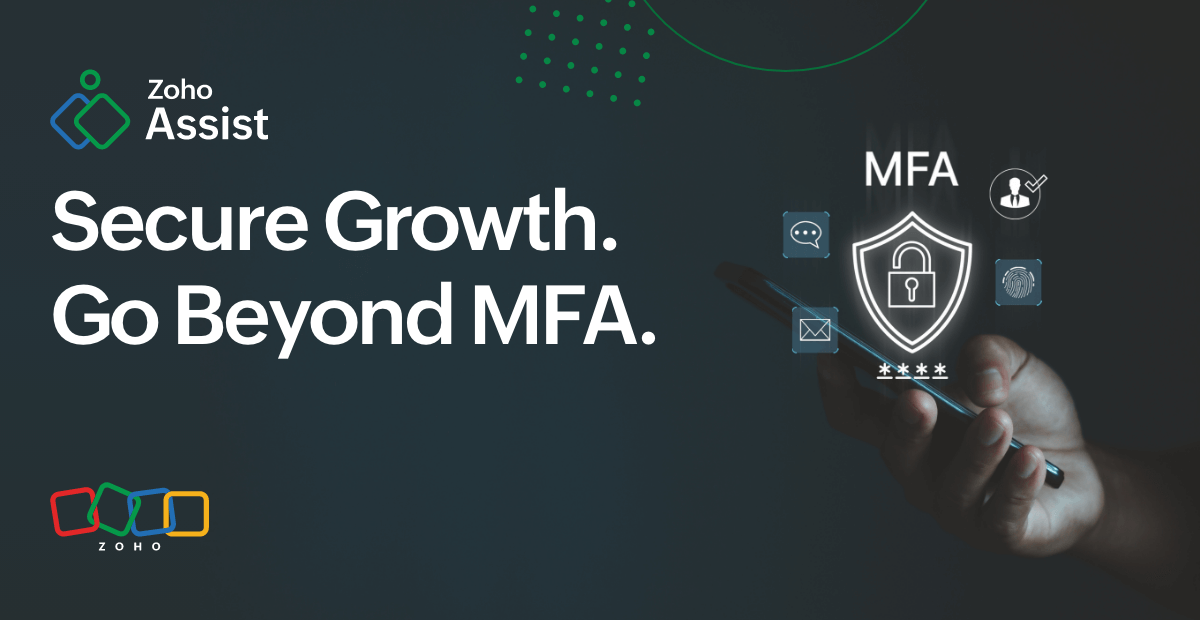- HOME
- Beyond passwords: Is MFA enough for remote support security?
Beyond passwords: Is MFA enough for remote support security?
- Last Updated : April 29, 2025
- 21 Views
- 2 Min Read
Remote support has become a cornerstone of modern customer service and IT management. It’s fast, efficient, and cost-effective. But as convenient as remote support may be, it also opens doors to potential security threats. One of the most widely adopted methods to bolster remote session security is multi-factor authentication (MFA). But the question remains: is MFA secure enough?

What is Multi-Factor Authentication?
MFA is a security feature that requires users to verify their identity using multiple forms of authentication before they can access a system or service. In remote support tools, MFA helps block unauthorized access by making sure only trusted users can start or join a session. But as cyber threats get smarter and faster, relying on MFA alone may not always be enough.
Why MFA is important in remote support
Remote support sessions often involve elevated privileges, access to sensitive systems, and the ability to control devices remotely. Without proper safeguards, these sessions could become the weak link in an otherwise secure environment.
MFA is the first line of defense against:
Credential stuffing attacks
Phishing-based intrusions
Unauthorized session hijacking
Brute-force logins
By requiring multiple verification steps, MFA ensures that even if a hacker steals your password, they still need another layer to break through.
Limitations of MFA
While MFA greatly strengthens security by adding extra layers of verification, it’s not foolproof. Cybersecurity requires a multi-layered approach, and MFA is only one layer in a proper security framework. Here are some ways MFA can come up short:
Social engineering
Attackers can trick users into revealing their second factor, especially if it's a one-time passcode sent via SMS or email.
Device vulnerabilities
If the device used to authenticate (like a mobile phone) is compromised, MFA becomes useless. Malware or spyware can hijack authentication apps or messages.
Token fatigue
Too many MFA prompts can lead to user fatigue, making people more likely to approve push notifications without verifying them properly.
Strengthening MFA with additional layers
Contextual access controls
Limit access based on geolocation, time of day, or device profile. For example, block login attempts from unusual IP addresses or outside working hours.
Audit trails & session logging
Every remote session should be logged, including details of who accessed what, when, and for how long. This ensures accountability and helps in forensic analysis if there is a security incident
Role-based access
Not every technician or support rep needs full access. Limit permissions based on roles to ensure people only access what’s absolutely necessary.
Zero trust policies
Even authenticated users should pass ongoing trust checks, especially during critical actions like file transfers or registry edits.
Zoho Assist’s approach to secure remote support
At Zoho Assist, we recognize that MFA is essential, but not enough on its own. That’s why we’ve built a multi-layered security approach into our remote support solution:
IP restrictions and geolocation-based access rules
Session recording and real-time monitoring
Role-based permissions
End-to-end TLS and AES-256 bit encryption
To protect remote support sessions truly, organizations must adopt a defense-in-depth approach, layering authentication, access controls, logging, and intelligent analytics to stay ahead of threats.
So yes, use MFA. But don’t stop there.